Reine des Violettes-should I give up?
Over the past year I've done a lot of work on my soil,and am reaping the rewards now. James Galway is absolutely breath-taking; The Ingenious Mr. Fairchild has improved vastly- there are still a lot of imperfect flowers, but enough of them are high-quality ,and the over-all impression that the shrub gives is beautiful.
But Reine des Violettes is another story. I worked on it's soil too, as much as or more than that of the others, but it's the same old story: most of the buds seem to sort of dry out,as if the roots just can't pump enough moisture up the long canes to get them to open.Most of those that do manage to open are deformed. One or two flowers are beautiful.This is more or less what The Ingenious Mr. F did in the past,but as I said, TIMF really has improved vastly after my work. We did get a lot of rain this fall/winter,too, but we did last year, too,before I improved the soil, so I'm hoping that I can keep TIMF. But RdV??? the shrub is very large, growing as a climber, really, and is basically healthy. What could be causing the flowers to fail like that? The soil I added is moisture-retentive clay,there's no chlorosis...I'm almost at my wits end. I am now thinking to try digging it up and putting it in a large pot,to see if I can get it to flower properly that way. It's kind of driving me crazy; I've got several roses that show their need for better soil by having health issues,etc.,but the case of RdV is unique. Out of curiosity alone I hate to sp it...bart
Comments (27)
jerijen
9 years agoHas it always been like that?
I ask, because we grew RdV for 20 years. It did fight chlorosis, and it most assuredly was virused. But it never had the problem you describe. So, I'm wondering if there is something inherently wrong with the plant.
roseseek
9 years agoMy experience with the plant mimicked Jeri's as far as the chlorosis, unless I mulched with Ironite and everything else I could find to acidify the soil and add copious iron. In this arid heat and overly brilliant sun, the buds fried, drying up and turning to potpourri more often than opening. It's definitely not one for overly hot, sunny, dry positions. Kim
Related Professionals
Norwood Landscape Contractors · Bridgeview Landscape Contractors · Marlborough Landscape Contractors · Newnan Landscape Contractors · South Hackensack Landscape Contractors · West Orange Landscape Contractors · San Pablo Landscape Contractors · Clearfield Landscape Contractors · Glenn Heights Swimming Pool Builders · Portland Siding & Exteriors · Aliso Viejo Siding & Exteriors · Largo Siding & Exteriors · San Bernardino Siding & Exteriors · Tooele Siding & Exteriors · North Adams Siding & Exteriorsbart_2010
Original Author9 years agoHmm...it hasn't been all that hot so far, thank Heaven, but the plant IS in full sun, and my land has a South-west exposure,and this IS Italy,where the sun is extreme. I didn't mention this before, out of shame, but this is my second RdV; I got this because I had problems like this with the first and was thinking maybe it's the plant! so I doubt that 2 different plants, both from reliable companies, could have something inherently wrong. I'm digging it up; that way I can be sure there are no air pockets or some obvious root issue. I'll put it in a pot for the summer, hoping to get it to work on it's feeder roots,and try it in a morning-sun-only spot. I don't want to do the "penguins in the desert" thing, but at this point even if just for the learning experience I want to play around. What was the placement of your 20.year plant like, Jeri?
jerijen
9 years agoBart -- We moved it, about 5 years in -- not that the plant needed it -- we needed to change that space.
The first 5 years, it had mostly morning sun. The subsequent 15 years, it had all-day sun. Didn't seem to matter . . . HOWEVER . . .
We are in a coastal strip in Southern California, and during most of the life of that plant our summers were moderated by coastal fog and haze, so high temperatures were un-heard-of, and the sun was not overly intense.
I know that, where it is in a lot of heat, RdV tends to go "hot pink." In our garden, however, it was almost always a true lavender. So much so that we once had it disqualified at a rose show by a "knowledgeable" judge, who "knew" that RdV should be hot pink.
I LOVED that rose, but I would not plant it again because of the chlorosis problem. Of course, a Virus-Indexed one might tempt me mightily.
Lynn-in-TX-Z8b- Austin Area/Hill Country
9 years agoBart I have 3 new Rdv, two are own root and one is grafted. One own root Rdv is in a pot, the other two ( the grafted and own-root) are in the ground.
The ground soil was prepped months prior to planting, inclusive of products to acidify it. I have not been able to observe their performance in "real heat" yet as we have only hand a few days here and there in the 90's thus far. What I have noticed is that the plant in the pot has exceeded the other two in terms of bloom frequency, bloom quality, and the plant thus far has grown more vigorously, but they are all healthy.
Lynn
bart_2010
Original Author9 years agoWhat irks me so much is that I clearly remember the first year of my first RdV,the little plant was covered in violet flowers, so perfect and beautiful! which seems to suggest that the plants just get "too big for their britches", as it were: i.e., out-grow their prepared hole and find nothing good enough around said hole to support flowering on what is by now a large shrub (this was planted in the olden days, before I really got the hang of soil preparation and was still doing rose HOLES, not BEDS). So that's one good reason to try moving it, along with the sun thing Kim mentions,because here,believe me, the sun is HOT.
Not to be obtusely stubborn,but if it turns out that I can't grow this rose, I'd like to discover why, or at least get an idea. It's like my thing about azaleas and rhododendrons: here in my area, you never see them in gardens in the ground, only in pots.Well, maybe it's because the soil here is too alkaline, thinks I. I tried a little rhododendron in a pot (using acid-lovers soil), but it dwindled,so I tried it in my garden, preparing the soil with acid-lovers soil, etc, etc, etc but the thing refused to grow and just dwindled and finally died. Someone said "it's too cold for them here" (that drives me nuts when the locals call the winters here "cold",lol),which of course I knew to be absolutely ridiculous,remembering the magnificent ones in the D.C. Arboretum (and that's a zone 7). Investigating around on Internet, however, I found a site that described how a rhododendron/azalea reacts to cold stress and also heat stress, and the description of heat stress was pretty much exactly the description of what happened to my plant.And then someone on the azaleas forum also mentioned that these plants need general humidity. I feel so relieved now,finally satisfied that probably the problem with growing azaleas, etc. here arises from the much drier heat than that of the climate of Washington D.C., because even though, sad to say, in recent years here in Italy we have been subjected all too often to the stifling,humid heat of the anticiclone Africano,I think D.C. must be one of the most humid places in the world, lol.(now, if I could only figure out why rugosas seem to refuse to grow in my garden...but first I'll tackle RdV...) bartbart_2010
Original Author9 years agoWhat irks me so much is that I clearly remember the first year of my first RdV,the little plant was covered in violet flowers, so perfect and beautiful! which seems to suggest that the plants just get "too big for their britches", as it were: i.e., out-grow their prepared hole and find nothing good enough around said hole to support flowering on what is by now a large shrub (this was planted in the olden days, before I really got the hang of soil preparation and was still doing rose HOLES, not BEDS). So that's one good reason to try moving it, along with the sun thing Kim mentions,because here,believe me, the sun is HOT.
Not to be obtusely stubborn,but if it turns out that I can't grow this rose, I'd like to discover why, or at least get an idea. It's like my thing about azaleas and rhododendrons: here in my area, you never see them in gardens in the ground, only in pots.Well, maybe it's because the soil here is too alkaline, thinks I. I tried a little rhododendron in a pot (using acid-lovers soil), but it dwindled,so I tried it in my garden, preparing the soil with acid-lovers soil, etc, etc, etc but the thing refused to grow and just dwindled and finally died. Someone said "it's too cold for them here" (that drives me nuts when the locals call the winters here "cold",lol),which of course I knew to be absolutely ridiculous,remembering the magnificent ones in the D.C. Arboretum (and that's a zone 7). Investigating around on Internet, however, I found a site that described how a rhododendron/azalea reacts to cold stress and also heat stress, and the description of heat stress was pretty much exactly the description of what happened to my plant.And then someone on the azaleas forum also mentioned that these plants need general humidity. I feel so relieved now,finally satisfied that probably the problem with growing azaleas, etc. here arises from the much drier heat than that of the climate of Washington D.C., because even though, sad to say, in recent years here in Italy we have been subjected all too often to the stifling,humid heat of the anticiclone Africano,I think D.C. must be one of the most humid places in the world, lol.(now, if I could only figure out why rugosas seem to refuse to grow in my garden...but first I'll tackle RdV...) bartingrid_vc so. CA zone 9
9 years agoBart, one rugosa you might want to try is Austin's Wild Edric, which is supposed to do very well in poor soil, heat and little water. I bought four, based on Susan's comments about this rose, but I haven't had them long enough to evaluate them fairly. Still, you might want to give it a try.
I also bought RdV, well-knowing it might not like my heat and dry conditions, and the results so far have not been stellar. I had a few blooms, then snipped off the rest to encourage it to grow, which it hasn't done. It also looks rather "pale", not yellow but more of a grayish hue. There's been no new growth after the initial burst, and now with hot weather coming it's anyone's guess what will happen. Not an easy rose for our conditions, and if this one fails I won't be trying again.
Ingrid
gnabonnand
9 years agoNot sure why mine is so happy, but it absolutely loves its spot on the Western side of my house. It took about 3 full years to get established, but it never looked back once it did.
It's one of only three roses I'd never live without.
Good luck with yours; I hope you try moving it to give it another chance. If you shovel prune it, please don't tell me :-)Randy
bart_2010
Original Author9 years agoSorry about the double post; not sure how that happened!
Anyway, I did the deed, and dug it up (what a pity, had to sacrifice some of my finest bindweed plants in order to get the rose out, lol...). Poor thing! deep down, it's soil was just this dumb, sandy stuff, like exhausted potting soil. It has no roots close to the graft; really, it's a miracle that it did as well as it did, considering! which is why I won't give up on this rose without a fight. Fact is, when I planted it 4 years ago, a health problem came up for me..(.at rose planting time, the nerve!!!!) I think I did a very bad job of planting that year. Remember, folks, I have bad, eroded soil,too thin in many places for plants like roses, so I "make" my own soil,and it's taken me a long time to learn; hopefully finally I figured it out, realizing that you just have to have native CLAY soil in my conditions for a rose to do well,and that means doing the back-breaking chore of digging up heavy clay and lugging it out there. I must've just used potting soil and organic matter or something for this poor RdV; the stuff was nice and black,and not dry, but sandy in texture, devoid of earthworms, etc...lifeless. Perhaps if I had waited several years, the rose would've started rooting in the clay I'd dug in, but I just couldn't dig it in deep enough to benefit the main root mass. So it's going into a pot for the summer, and I'll try it again in proper soil this time, with afternnon shade if possible.If this works out, I'll move the older plant, which for now is languishing in one of the areas of the garden that I haven't yet had time to work on.
Ingrid, I did try Wild Edric;that was one of the 2 rugosas I tried. First Roseraie de L'Hay; vigorous and healthy in a pot from Barni,it began to dwindle soon after I planted it out in my garden. By the second season, it was reduced to almost nothing, so shovel-ho. Then, I thought. maybe Wild Edric would work better, being a hybrid. Prepared the planting area with great care, adding sand, acid-lover's soil, etc. The rose dwindled. Moved it to afternoon shade...and behold! a basal break! which on closer examination turned out to be a sucker from the root-stock. I gave up in disgust...I hope it does better for you; let me know! Btw, my The Ingenious Mr. Fairchild is once again beautiful this year, after my hard work on the soil and all the rain. I hope the soil improvement will wind up being the decisive factor, since we can't count on being so lucky with rainfall every year. I have it supported on a re-bar teepee; I did take pictures, hopefully will get around to figuring out how to post them....regards, bartingrid_vc so. CA zone 9
9 years agoBart, I'm sorry Wild Edric did so poorly for you. My soil is alkaline and my four own-root bands are doing very well, three in the sun and one in afternoon shade; they all look the same, and my soil is nothing to write home about.
I hope your RdV recovers in its pot. Given what you found after uprooting it, there seems to be a good chance that it will. I'm still somewhat hopeful for mine since at least it hasn't deteriorated; it just seems to be in stasis. Hopefully something good is happening below the surface.
Ingrid
bart_2010
Original Author9 years agoHow long have you had your RdV, Ingrid?
Btw, I looked it up on the Peter Beales? website; they describe it as "tolerant of some shade",and that's IN ENGLAND !!! so, mine is definitely getting put in a shady spot...gringo
9 years agoI was wondering, if I'd ended up with' la Reine', instead of 'de Violette', but according to some of your observations, maybe it is Violette, after all. I had a tiny one many years ago from an offereed collection & it was up next to the corner of the foundation, with only southeastern exposure & the color was gorgeous, out of afternoon sun, but hardly grew.
But, it does tend to get 'baked flower syndrome' in more sun (yet tends to fully open) & higher heat above 85 & quickly fades, too...I Gather, it's just a bit picky according to siting & your weather!DavidBeck
9 years agoFrom what you described, the problem may be the pH of the soil.
Many roses start out well for the first year in soil who's pH value is not ideal. The plant then "shuts down" and does poorly for the duration of its life. It simply cannot get the nutrients it needs, no matter how much water and fertilizer it gets.
I don't know if you checked the pH level, but this could be the (or a) culprit. Roses like a slightly acidic soil (neutral is 7.0). The level should be between 6.5 and 6.0. Below 6.0 and the soil is too acidic. above 7.0, it's alkaline. If you live in an area where pine trees reign, the soil is likely too acidic (pine trees like very acidic soils, around 5.0 to 4.0).
If the pH level is off in either direction, contact your local county extension service (some states call them Ag Centers) or a really good local nursery with experts on soils to get advice on correcting the problem to ideal levels.
gringo
9 years agoAs I failed to read much, due to time constraints, I was going to suggest, exactly as you already had come up with the idea of potting it. That way, during brief hot spells, you could spare the blossoms from baking, before opening. Mine is potted & it just so happened that I realized it was quite as hot that day, as I had thought & it was too late. But, it may just be, that it require an extremely good thorough drenching of water, just as its about ready to bloom. Moving to a warm location only at the appropriate time, for flowers to unfurl, if it happens to be too cool...Then move to the shade upon opening, to help preserve the deeper color & lengthen duration of the flower life...
btw Hadn't any idea it could get anything remotely like having branches resembling a climber, if I did read correctly. How fortunate you are!
Just dig carefully, as my 'la Reine Victoria' died after 15 years, due to my hastily digging & severing the taproot, as soon as I first put the shovel to the soil & now can't seem to locate it, anywhere...bart_2010
Original Author9 years agoThanks for your responses. I'm planning on keeping it in the pot during summer, and then planting it out again in my garden,this time in indirect sun,and with proper soil preparation as well! I'll just sp it if it still refuses to be nice.
I live in Italy, and don't know what a "local county extension service" is,but I'm pretty sure they don't have it here! However,the plant itself was always pretty good -no chlorosis-, it was just the difficulty in flowering that was a problem,and seeing the sandiness of the soil the roots were in ,that's not too surprising,really...It had not managed in four years to put out any of it's own roots, it's still just surviving on rootstock,which problem I hope to begin to ameliorate in the pot...bartnikthegreek
9 years ago' If you live in an area where pine trees reign, the soil is likely too acidic (pine trees like very acidic soils, around 5.0 to 4.0). '
This is more often than not far from true in the Mediterranean region and for the species of pines thriving here. Prime example is Pinus halepensis (Allepo pine), a native of the Eastern Med, which thrives in dry, alkaline and calcareous conditions (pH of 8 or higher). In fact it seems to demand them. Other common pines, such as Pinus nigra (Austrian or Black pine) found a bit further north and west from the halepensis zone, also thrive in alkaline soils.
NikThis post was edited by nikthegreek on Thu, May 29, 14 at 14:41
nikthegreek
9 years agoBart,
It would be better not to let the rose grow its own roots if it is a plant suspected not to be very tolerant of local conditions (e.g. pH). You can do that by not burying the bud union. If the plant grows it's own roots that will slowly make it revert to own root. It would be better to let the rootstock do its job. Where did you get your RdV from? Do you know the rootstock used? Rootstocks used in Europe are generally quite tolerant of relatively alkaline conditions. Of the one's commonly used best for that purpose seem to be Laxa and R. indica major, to my knowledge. Other cultivars of R. canina often used are also quite tolerant.
NikThis post was edited by nikthegreek on Thu, May 29, 14 at 14:38
ingrid_vc so. CA zone 9
9 years agoBart, I got mine last fall, own-root, but with good long canes. From what Randy says it may not do well, being own-root, and it will be interesting to see how it performs in the long run. My expectations are not very high at this point since this is not an easy rose, and my conditions are very difficult, but if nothing else it will be an interesting experience.
Ingrid
gringo
9 years agoThis was as best as I could manage, considering the temperature swings from cool, to overly hot, just as blooming was ready to occur! Chelated iron may had been 'foreclosed' upon, but was not letting go of the rose...
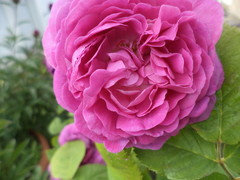
bart_2010
Original Author9 years agoI would think that if a rose decides to go own root, that means it's happy enough with the soil. I intend to try it in shadier conditions, and if that fails, ditch it. If it's the soil,the native soil,and the native climate that the plant doesn't like,it seems silly to go fiddling around anymore. As I already pointed out, the thing was growing in pathetic,lifeless soil ,so it didn't have a fair chance. I plan to give it a fair chance,like any other rose,no more.
nikthegreek
9 years ago'I would think that if a rose decides to go own root, that means it's happy enough with the soil'
I doubt this is an absolute truth although I cannot document that it isn't and I'm open to discussion.
What I can tell you is that, to my knowledge, budded fruit trees are never planted with their bud unions in the ground for the reason I mentioned, amongst others. Why roses would be different I wouldn't know. I'm not blindly recommending never to burry the bud union in roses. I'm just suggesting that if we know that a rose is problematic and we suspect this may have to do with its eclectic soil preferences or narrow tolerances it would be better to let the rootstock do the job.
Rootstocks in roses very often provide an advantage vs own root. There is a tendency to think that grafted roses are a bad thing and budding is only being done for the convenience of the propagation industry. While this is an important factor, we should also keep in mind the other reasons why grafting is practiced. If the plant's root system cannot perform well either because it is genetically lacking in vigour or it does not like the local soil conditions or it is susceptible to soil borne disease or pests then a rootstock which is more vigorous and tolerant may help it thrive.
Nikroseseek
9 years agoVery often, your comment about going own root doesn't necessarily mean the plant is satisfied with the soil is correct, Nik. I had an old Lavender Pinocchio from Roses of Yesterday and Today years ago which went own root. It was a terrible plant on the virused Huey, and tremendously worse own root. On Huey, it didn't suffer chlorosis. Own root, it did, and had the litany of diseases. It finally died.
When I see seedling roses which have disease issues, they are almost always lacking a decent root system. Out of a batch of many dozens from the same cross, there are often several which are real "Jack and the Beanstalk" types with many which just don't develop into decent plants. When I transplant them into individual pots, I consistently find the "Beanstalk" types have tremendous root systems. The wimpy, diseased plants have very little root mass beneath them. I'm sure some of the wimps would develop into interesting plants if budded, but at what price? The rose world is full of those already.
You're also spot-on about letting the root stock do what it was selected to do. Kim
bart_2010
Original Author9 years agoWell,this thread has by now gotten out of hand,in the sense that it's not really talking about my specific issue anymore, which is OK, of course,but I think I better stop reading it since it's starting to frustrate me. My RdV is a very large,(6 or 7 feet tall) healthy plant,did defoliate with bspot this year, as have many other of my old roses (I'm trying to give up spraying entirely, and the weather has been less dry than usual...),literally, my only gripe with it was it's inability to produce a flush of flowers,it did plenty of buds which just dried out, or opened warped and aborted-looking, with only one or two good flowers. After digging it up,I am not surprised...and I think if anyone other than Ingrid had bothered to read my second post on the subject,they would not be either. If giving the thing decent conditions doesn't work, I'm sp-ing it; I don't want to do" penguins in the desert" either. I understand the thing about own-roots; I tried an own root Chateau de Clos Vougeot, clbg,and in three years it remained 8 inches tall. I decided to try it grafted, and my new one is growing enthusiastically. But I also had a total failure with a grafted Gloire de Dijon; maybe it just got too weakened by the fact that it was growing in overly poor soil for it's first couple years, and just never recovered.Both of the rugosas I tried were grafted,and both failed ( all that grew on Wild Edric was the rootstock). But I see no reason to jump to the conclusions that are being presented here! Kim's and Jeri's comments at the beginning were pertinent...
gringo
9 years agoHi Bart. I just consider this a rather challenging rose to get the best flowers from. Yes, it can have issues with the blossoms & some years were like a masterpiece of beauty & others, I patiently watched & waited, only to be disappointed nearly to the point of tears. I'm not joking.
I understand your frustration, not only with this rose, but deviation from finding a good solution. But, it isn't exactly one of the easiest, to get to perform. to perfection & right at the time its ready to be in full glory, you patiently wait in anticipation & a slight variation in the weather, can be the very quick, untimely undoing of all your greatest expectations.
Its so very sensitive to changes, just as its ready to flower.ingrid_vc so. CA zone 9
9 years agobart, if you're still following this post, it slipped my mind earlier to comment about your The Ingenious Mr. Fairchild. As you may remember I also have one, a younger plant. I'm glad to hear that yours is doing well again; I remember the beautiful picture you posted which showed it the year it was doing well before. Mine looks nothing like that, with thin canes that are bowed over by the flowers, which wilt quickly in the sun. However, it has no disease and is putting out new buds, and I'm hoping it will improve by next year in terms of tolerance of the sun and filling out a little. Mine is not the beautiful cool pink that I remember from yours, but that might change too. I've been trying to nourish it more and make sure it has plenty of water and mulch. I think it's a rose worth being patient with.
Ingrid
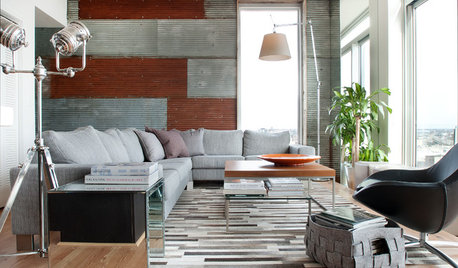
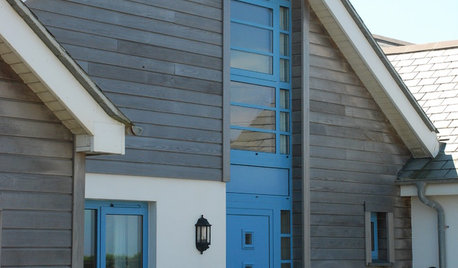
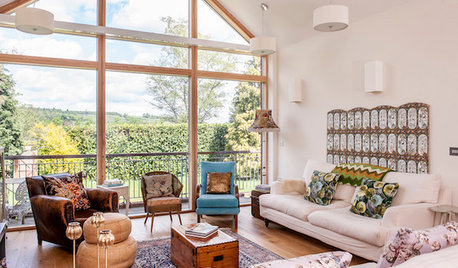
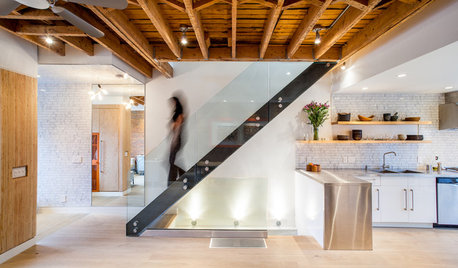
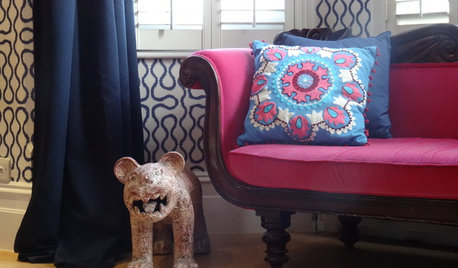
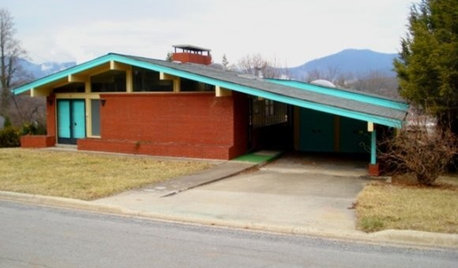
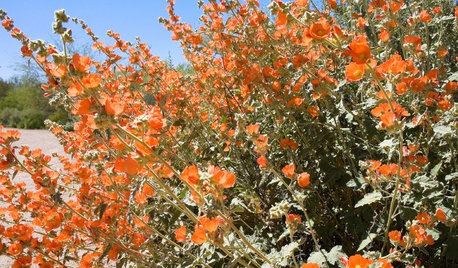

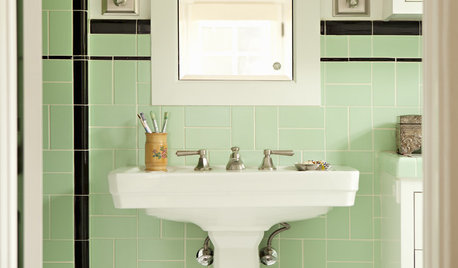











Molineux